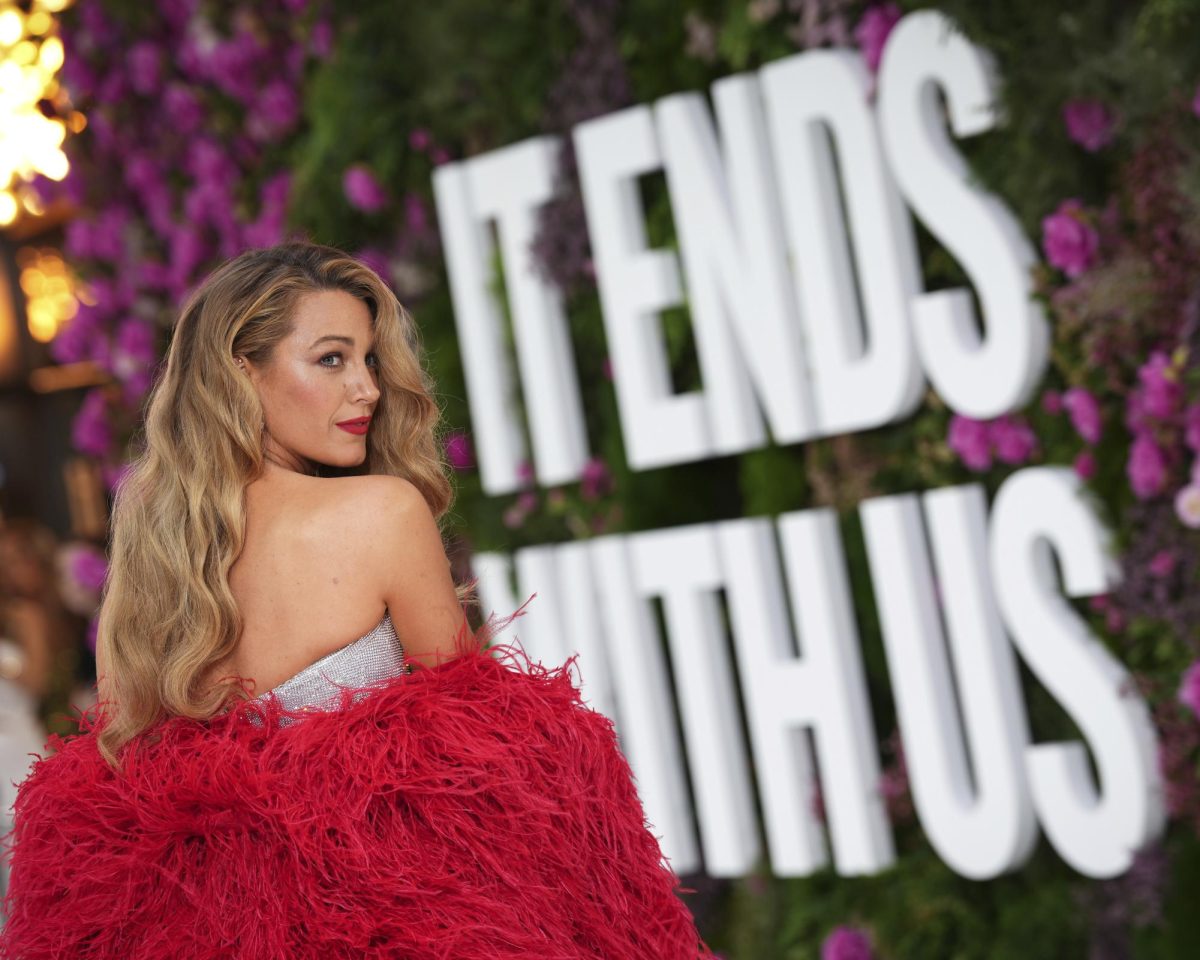It is unsurprising that the behind-the-scenes drama and marketing blunders have dominated discussions of Justin Baldoni’s new film “It Ends with Us” — the lackluster direction, cinematography and writing leave audiences grasping for more. While it captures the spirit of its source material — being bad — the screen adaptation fumbles the aspects that drew fans to the book in the first place.
“It Ends with Us,” directed by Baldoni, is adapted from the cultural phenomenon and hit novel of the same name by Colleen Hoover. Baldoni bid for the film rights in 2019, long before the book would surge in popularity. Although published in 2016, with the help of a cult following on TikTok, the book leapt to the top of the New York Times Best Seller list in January 2022.
The trailers for the movie detail flower shop owner Lily Blossom Bloom — yes, that’s her real name, but it’s okay because the movie is self-aware, right? — and the two men she falls in love with as a young woman. But softly lit and romantic clips of Lily’s love triangle do not prepare audiences for the real theme — domestic violence. In poorly placed flashbacks, we watch as Lily, played by Blake Lively, falls in love with a homeless boy named Atlas Corrigan and grapples with the abuse that her mother suffers at the hands of her father. Most of the flashbacks, while necessary, come at such awkward points that stifle the flow. Years later, Lily meets Ryle Kincaid — again, all real names — and starts an abusive relationship. For audiences who were not aware of the book before seeing the film, the first time Ryle hits Lily is jarring for most, and incredibly triggering for others.
A strength of the film is the casting and performances. Young Lily, played by relative newcomer Isabela Ferrer, is a carbon copy of Blake Lively. Her chemistry with young Atlas, played by Alex Neustaedter, made for some of the best moments of the film. Older Atlas, played by Brandon Sklenar, made the best of his material. The director, Baldoni, who also plays Ryle Kincaid, does not shy from flipping the switch from villainous to charismatic. However, the best parts of the film are the side characters. Ryle’s sister and brother-in-law, played by Jenny Slate and Hasan Minhaj, respectively, were criminally underutilized.
Baldoni and his screenwriter Christy Hall attempted to stay as true to the source material as possible, especially considering Hoover’s close involvement in the development of the movie. Therefore, it’s difficult to both judge the film completely on its own and blame all of the issues on the filmmakers. The romantic dialogue in the film feels clunky and unrealistic, but it’s an honest homage to Hoover’s abysmal prose. Lily and Ryle’s first conversation, written by Ryan Reynolds — yes, Ryan Reynolds — is so awful and devoid of natural romance, it truly makes me wonder if he was trying to sabotage this film from the start.
However, with the changes they did make, it’s hard to pinpoint if changing or leaving elements of the novel would have increased the quality of the screen version. For example, the Lily whose head we’re trapped in for 384 pages is quirky to a cartoonish extent, which is almost excusable because she’s 23. Almost being the operative word — the flashbacks are presented to the reader through diary entries written to Ellen DeGeneres — Lily does not feel like a real person. However, the film aged her up, erasing most of the personality that made fans empathize with her. Many fans have complained that the Lily in the movie is a self-insert of Lively. Lily is known for her eccentric sense of style, and Lively attempted to bring this aspect to life on her own. Unquestionably, Lily wears some of the worst outfits I have ever seen in my entire life. I would rather slurp jeans through a straw than leave my house in the clothes that Lively chose.
The film chooses to make the abuse more ambiguous than the novel. While the novel makes Ryle someone who suffers from self-diagnosed fits of rage, the film shows signs of him being controlling and uses editing to make the aggressive outbursts look like accidents. Some disagree with this choice, but making things ambiguous is reflective of the gaslighting and self-doubt that a lot of domestic violence victims suffer. This editing choice is one of the few directional choices Baldoni gets right. The rest of the film is visually boring. At first, the constant mentions of Boston feel ham-fisted, but without them, you wouldn’t know where this takes place. All of the shots are so flat and uninteresting that Baldoni made such a beautiful city look unrecognizable. The horrific aspects of domestic assault, combined with the love triangle, open the door for visual storytelling through lighting and shot composition. However, Baldoni opted for a plethora of brightly lit medium-wide shots.
With my opinions, I will join the ever-chugging hate train surrounding Colleen Hoover, her novels and her fans. There are more than enough reasons to hate her, only a fraction of which I detailed here. However, most meaningful critiques of her work are watered down to “‘It Ends with Us’ is a pornographic romanticization of domestic assault!” which is not true. Some, not even close to all, of the hatred towards her fans is disingenuous and rooted in misogyny. However, her fans’ response of, “You are overly hateful when it pertains to women’s stories,” is just as false. All of this goes back to my initial point. “It Ends with Us” is bad in incredibly unremarkable ways. Elementary, yet bizarre, writing, bad direction and a boring adaptation are simply not worthy of thought pieces. I wish there were something, good or bad, to chew on with this film, but at its core, the movie is bland. Here’s to hoping the documentary about Lively versus Baldoni is just a little bit better.


